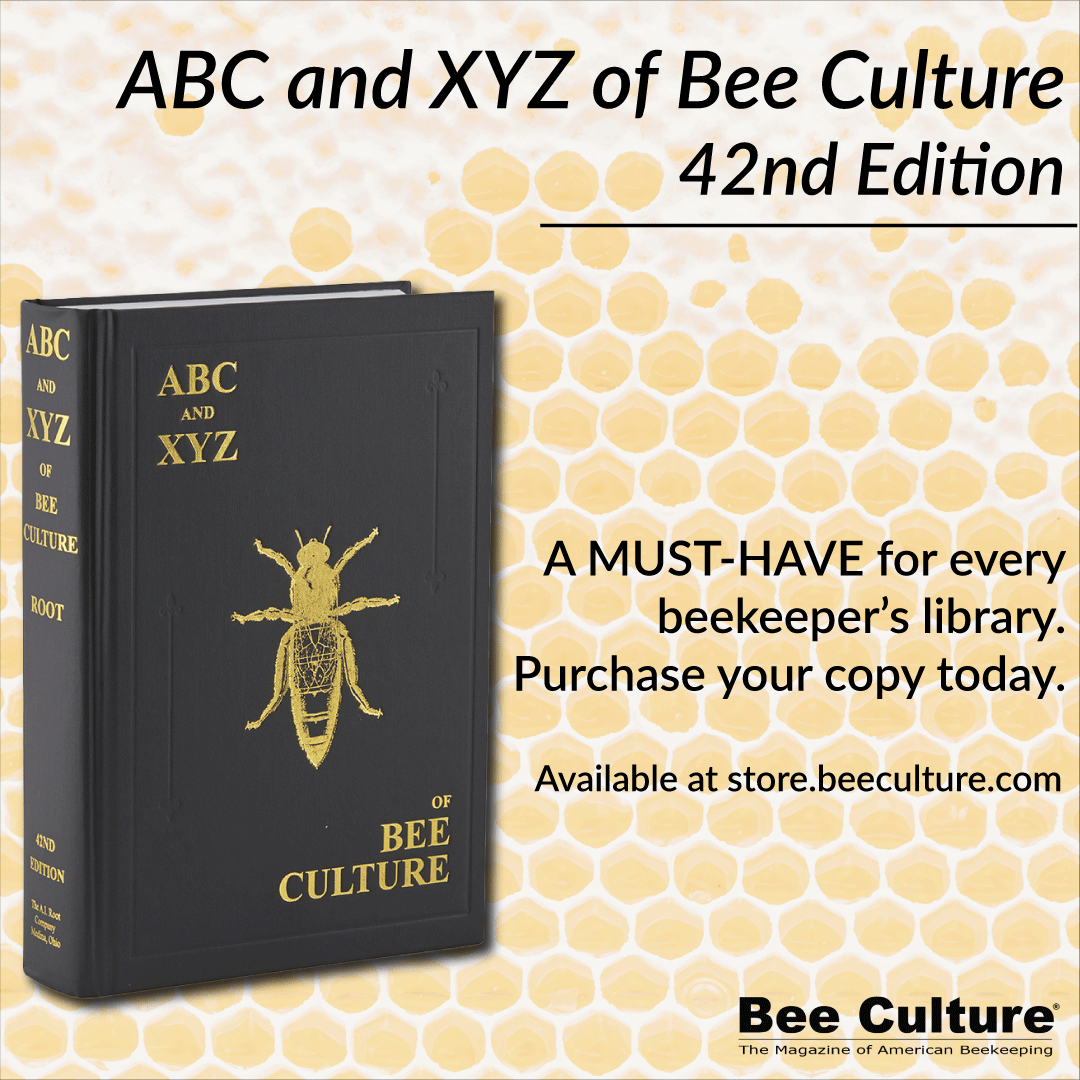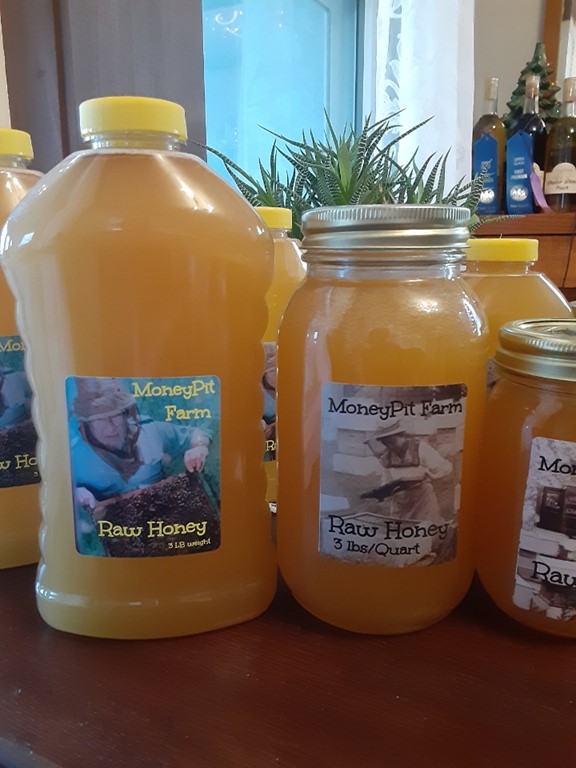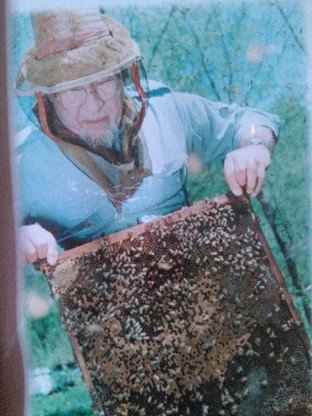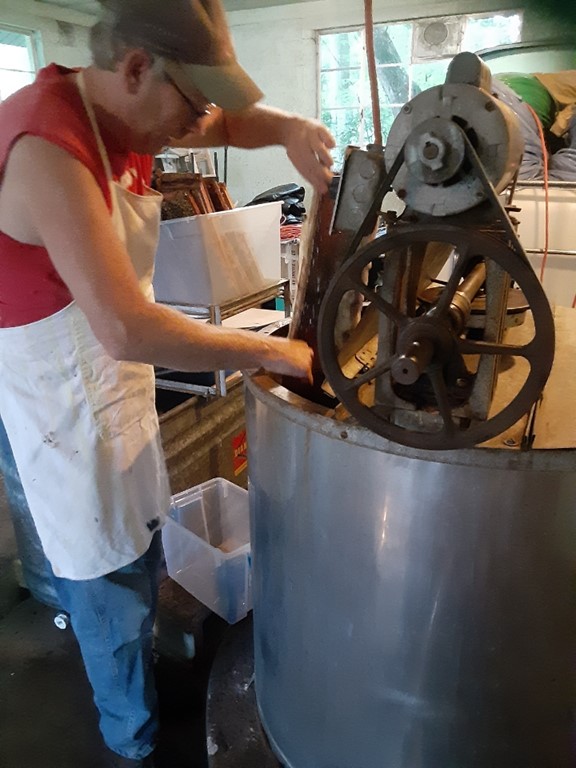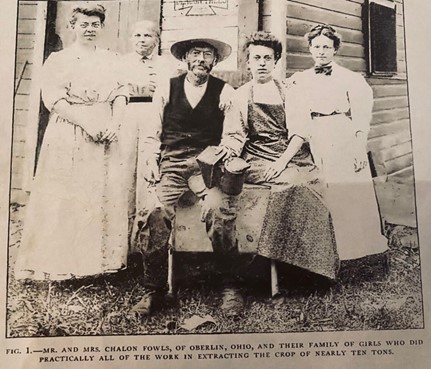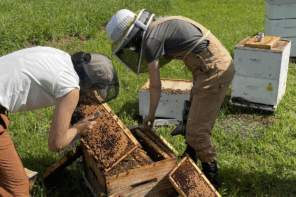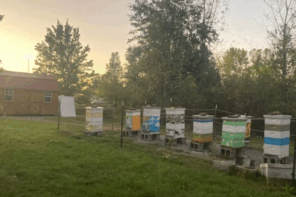Iona Fowls
By: Nina Bagley
Iona Fowls was born on September 7, 1882 in Oberlin, Ohio. She had an older sister Violet and a younger brother Arba. Their parents, Chalon and Caroline, who were also born in Ohio, were commercial beekeepers. Little did Iona know that she and her sister would continue the occupation of beekeeping by handing it down through the generations.
Her father, Chalon, with the help of his wife, started beekeeping around 1890 in Oberlin, Ohio. He married Caroline, bought a farm and had a family. He may intended to have lots of sons to help with the farm work, but the Fowls had two daughters and one son. Chalon and Caroline’s first daughter Violet was born in 1878.
Four years later Iona was born. It would be some time before their brother Arba was born in 1892, and he would take a different direction, becoming a carpenter instead of a commercial beekeeper. And so the beekeeping work fell on his older sisters to help their father with his apiaries. Chalon had five apiaries, including one in the back of his home near the Lake Shore Railroad. These apiaries lie in four directions from the village, one was near Wellington, Ohio. To transport the honey, it was an eighteen-mile trip coming and going by wagon or trolley to the Fowls home, which made the workday even longer. Mr. Fowls would then store the honey in the back of his house.
He had a room equipped with the latest honey-extracting equipment from A.I. Root Co. of Medina, Ohio. The Root Company was the only company that manufactured this type of machinery. The machine, called the Novice, is operated by a gas engine, saving his two daughters’ work. It was formerly done by hand. During 1910, Chalon Fowls extracted nearly ten tons of honey, and his season was not yet over. From his apiary on East College Street in the village, he took 500 pounds of comb honey. He was finding the need for more room to store the barrels of honey. So Mr. Fowls built a pipeline into his basement, emptying it into a large tank. A float on the tank rings a bell, letting him know when the tank is full. The heavy honey crop in 1910 was due to the vast amount of white clover during June and July. His daughters ran the extracting machine. The girls were expected to help, and help they did! Violet worked in an orphanage teaching, but her father needed all three women to help run the extracting machince and extract the honey. Hence, she quit her job and returned to the family’s East College Street home to help.
Chalon Fowls and his two daughters had made beekeeping their sole business. They succeeded in it unvaryingly, year after year, becoming financially well off. Owning his own Model T Ford the family would take vacations to West Palm Beach, putting up a tent along the way and camping out for the night. The Fowls had a banner on the Model T, which waved in the wind, advertising they came from Oberlin, Ohio. In 1917, A. I. Root Company and the magazine, Gleanings in Bee Culture, was growing, so management gave H.H. Root, the younger brother of A.I. Root, the managing position, then promoted A. I. Root’s son Ernest Root to the managing editor position.
Ernest was a student at Oberlin College and had been around bees his whole life. He remembered while in college, Mr. Fowls would come and talk about bees. He also remembered his daughter Iona had been helping her father with the bees since childhood. Ernest was looking for an assistant editor. So, in addition to the editorial staff at the Root Company, Ernest hired Miss Iona Fowls as his assistant editor! She made him look good, and he knew it! He admired her energy, especially the knowledge Iona had gained from her father, giving her the skills that made her a good beekeeper. Her area was in “The Department of Questions and Answers” for Gleanings; she would prepare the answers and then give them to Ernest to publish. It was very seldom that Ernest had to make corrections.
When Ernest was sure he had to have an assistant, he knew the person should be an experienced beekeeper who had successfully cared for bees on a commercial scale. He was certain Miss Fowls was more than qualified. In addition, to her ability in beekeeping, she graduated from Oberlin College, having a B.A. and M.A. degree. Iona, a brilliant teacher in math and physics, was considered full of energy and a hard worker. She also had experience as a teacher during her mid-twenties. She taught high school in Darlington, Wisconsin. She was thirty-five years old and not yet married when she became assistant editor writing for Gleanings in 1917.
Miss Fowls contributed her knowledge and experience in beekeeping and this is why Ernest Root had put her personally in charge of their beeyards; nine different apiaries containing over eight hundred hives. She worked at A.I. Root until 1921.Meanwhile, both sisters still lived at home on East College Street in the village of Oberlin, Ohio, working for their father.
A man named Clyde P. Wheeler asked Miss Iona Fowls to marry him. It’s quite likely that Clyde may have worked for his future father-in-law at some point. Clyde was nine years younger than Iona. He was a commercial beekeeper and had a degree from Oberlin College. He was an honorable man who served in World War I. The two were married in 1921 in Oberlin, Ohio. Iona became Clyde’s assistant, and the following year, she became pregnant with their first child at forty. So in 1922, H.H. Root took over as assistant editor for Gleanings. Their daughter Wilda was born in 1922 in Oberlin, Ohio. Two years later, at forty-two, she had her son Huber.
Iona’s mother, Caroline, passed away in 1930. Her Father, Chalon, died in 1934. Both parents are buried in the Westwood Cemetery in Oberlin, Ohio. Iona’s father was one of the pioneers of Oberlin and a prominent commercial beekeeper.
Iona, at fifty-two, had been married for fourteen years, raising her family and being an assistant beekeeper to her husband. Clyde is very active in the beekeeping community. He was elected president of the Ohio State Beekeepers Association in 1929 and appointed to the first county apiary inspector’s position in 1930. Iona continued handing down the tradition of beekeeping to her children, assisting her husband in the apiaries and caring for the family.
Iona’s daughter, Wilda lived in Fulton County, Ohio, with her husband Chuck for over fifty years. She held a ham radio license, raised a family and continued the family tradition of being a teacher. Iona’s sister Violet never married and lived with Wilda’s family until she passed away in 1974 at the age of ninety-six.
Iona’s son Huber, graduated from Michigan State University. Being raised in a family of beekeepers, he was an all-around outdoor enthusiast. Huber took a break from school to serve his country in the U.S. Navy from 1943 to 1946. He married Vera Petty in 1950. Huber worked for several years for the Ohio Conservation Department.
Huber and his wife moved to Madison, Wisconsin, where he worked as a biologist with the Wisconsin Conservationist Department. Retired in 1974, he moved the family to River Falls, Wisconsin, to become a full-time beekeeper. He was active in the Pierce County beekeepers club and held office for the Wisconsin Honey Producers Association. Iona and her husband Clyde preceded their son Huber to Wisconsin and paid cash for a farm in River Falls, Wisconsin. Making a go at beekeeping and maple syrup production in Wisconsin, Iona and her sister Violet were very accomplished, and it’s apparent that Iona’s children had been as well. Iona’s husband, Clyde, passed away in August 1965 doing what he loved – working bees. He was seventy-five years old.
Iona continued as a member of the bee clubs in Ohio and Wisconsin, living with her son and daughter going back and forth from Wisconsin to Ohio. She spent the last six years of her life in the Provincial House in Adrian, Michigan (a nursing home facility). Iona passed away in 1980 at the age of ninety-eight and was buried next to her husband Clyde at Greenwood Cemetery in River Falls, Wisconsin.
Her son Huber, along with his wife Vera, carried the beekeeping torch for another thirty-seven years until Vera’s passing in 2012. Huber died in 2019 just shy of ninety-five years old. They are survived by their sons John and Gregg. The tradition of beekeeping has been passed down to his son Gregg, Iona’s grandson, who lives in Wisconsin, like his father and grandparents before him. Gregg is a beekeeper, while his wife Joan bottles and sells their honey online and at various markets. Their son Caleb also helps in the field when possible, making him the fifth generation to participate. Their honey label is the picture of Gregg’s great-grandfather Chalon, his great-grandmother Caroline, his grandmother Iona and great-aunt Violet in front of the honey house in Oberlin, Ohio.
The picture of his family is why I wanted to write about the Fowls. I came across the picture some years ago and found it fascinating – a beekeeping family rich in history, handed down through the generations. The days of old need to be shared so we can remember what was and not take the honey bee for granted. I want to thank Gregg Wheeler, Huber Wheeler’s son, Iona’s grandson and Chalon’s great grandson for the family pictures and helping me with my research of his families’ beekeeping history.
Nina Bagley
Ohio Queen Bee
Columbus, Ohio






